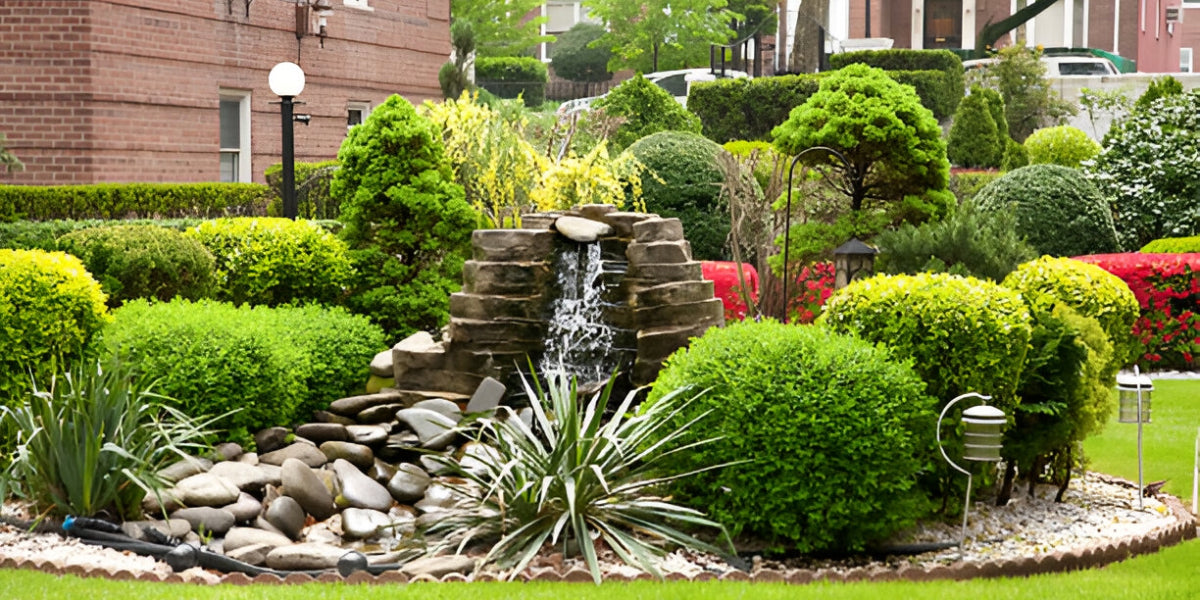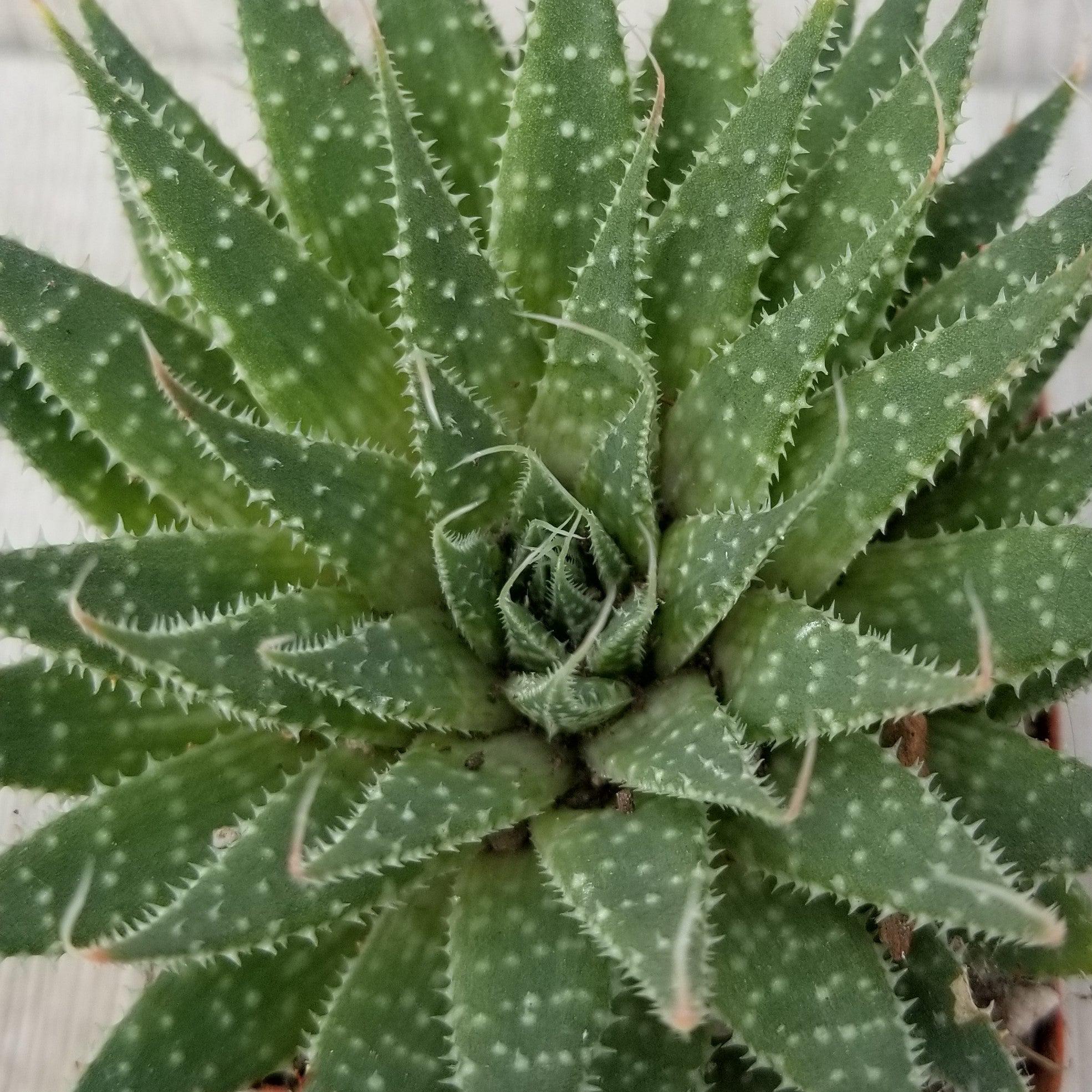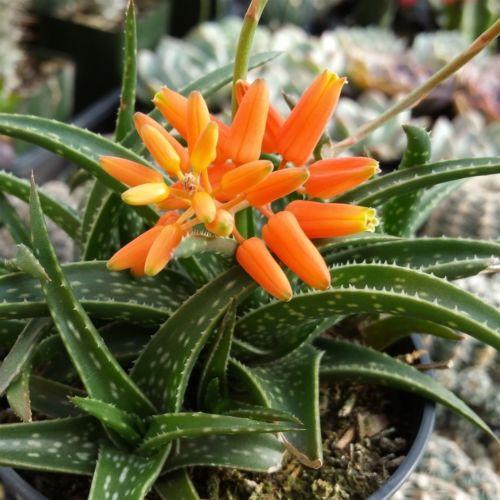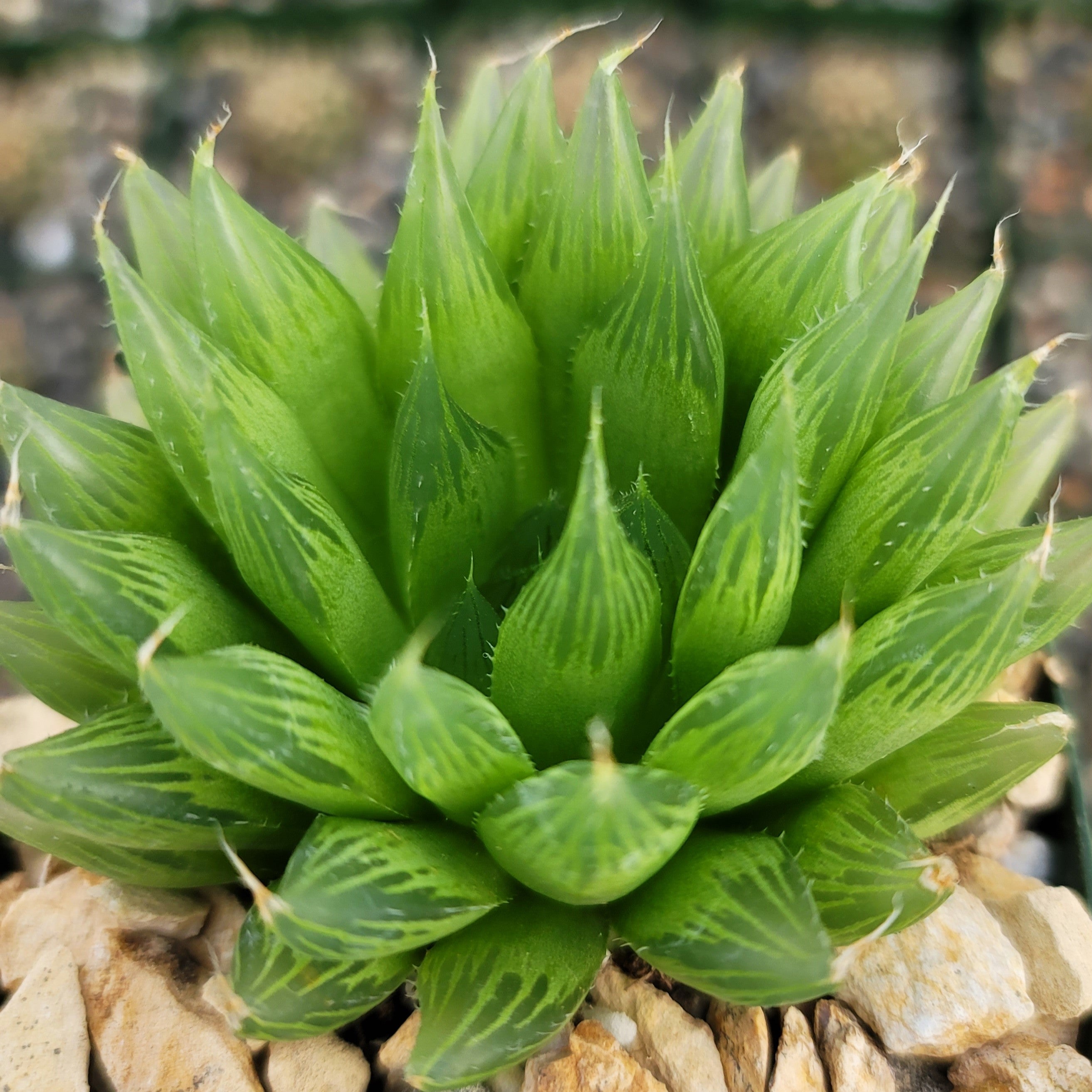Our Favorite Aeonium Succulents ‘Care & Garden Design Ideas’ Everything You Need to Know!
Updated: April 30, 2025

Aeoniums, often referred to as the “rosettes of the succulent world,” are captivating plants known for their symmetrical, rose-like forms and vibrant colors. Native to the Canary Islands, Madeira, and parts of North Africa, these Aeonium succulents stand out not only for their beauty but also for their unique growth habits.
Unlike many other succulents that thrive in intense heat and full sun, Aeoniums prefer cooler, milder conditions, making them a versatile choice for gardeners. Many Aeoniums sold commercially are hybrids, and there are few natural populations left in their native habitats.
What sets them apart from other succulents is their tree-like growth habit and their ability to grow into miniature bonsai-like specimens, making them a favorite among collectors and gardeners.
Aeoniums include both branching species, which continue to grow and produce new rosettes after flowering, and unbranched species, which are typically monocarpic, meaning they die after blooming.
Unbranched species typically live around 3 to 5 years before blooming and dying completely, but branching varieties like Aeonium arboreum 'Zwartkop' can live much longer, often up to 10 years or more. In these branching types, only the flowering rosette dies, while the rest of the plant continues to grow, producing new offsets that extend the life of the plant.
With proper care, many Aeoniums can be enjoyed for nearly a decade or longer. There are about 35 types of Aeonium, and you will learn about our 14 favorites below.
All About Aeonium Plants
Aeonium succulents are also known as Tree Houseleeks or tree Aeoniums because of their woody stems, rosette-like appearance, and glossy, waxy, sticky green leaves. The rounded leaves of the rosette structures are so perfect that these succulents are occasionally misidentified as artificial plants.

They are especially prized for their symmetrical, rose-shaped rosettes that range in color from bright green and yellow to deep burgundy and black.
Many species can grow tall stems, often branching out and forming clusters of rosettes, resembling tiny succulent trees.
One of the most exciting features of Aeoniums is their natural tendency to resemble bonsai succulents.
Their tree-like structure, combined with the compact rosettes, makes them ideal for creating miniature landscapes or potted displays.
When cultivated in small containers or with strategic pruning, Aeoniums take on an elegant, artistic form reminiscent of traditional bonsai trees.
The most popular bonsai variety is Aeonium arboreum 'Zwartkop' (Black Rose) due to their dark, dramatic foliage. Unlike other succulents, these slow-growing Aeoniums thrive in the cooler, wetter months of fall, winter, and spring, going dormant in the heat of summer. During dormancy, their rosettes may close tightly to conserve moisture, creating a distinctive look that adds to their charm.
Aeoniums are monocarpic perennials, meaning their rosettes can live for three to five years before flowering and dying, but don’t worry, they often produce offsets or pups to continue growing. They send up tall flower stalks from the center of their rosettes, bearing yellow, white, or pink star-shaped blooms, depending on the species. While the flowering rosette dies, the plant’s ability to produce offsets ensures it thrives for many seasons, making Aeoniums a long-lasting and rewarding addition to any garden.
Aeonium Plant Care – Tips & Tricks for Healthy Growth
Aeoniums are low-maintenance succulents known for their unique rosette growth and drought tolerance. They thrive in well-draining soil, bright light, and mild temperatures, making them excellent for both indoor and outdoor gardens. Water sparingly, adjusting based on the season—more during active growth (fall to spring) and less during summer dormancy. These succulents prefer moderate humidity and good air circulation to prevent rot. With minimal care, Aeoniums can grow beautifully and even produce small, star-shaped flowers, adding charm to any space.
Quick Reference

Bloom Season
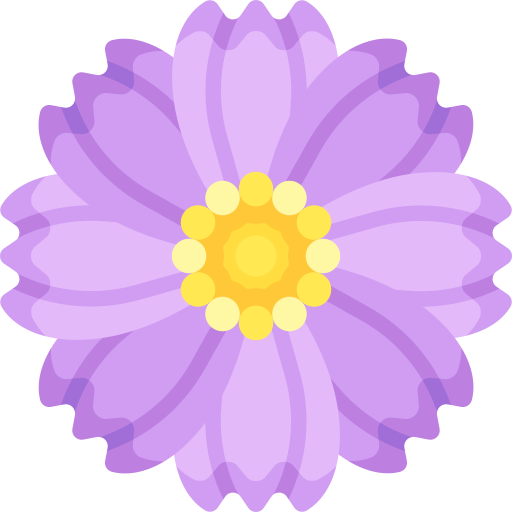
Flower Color

Growth Rate
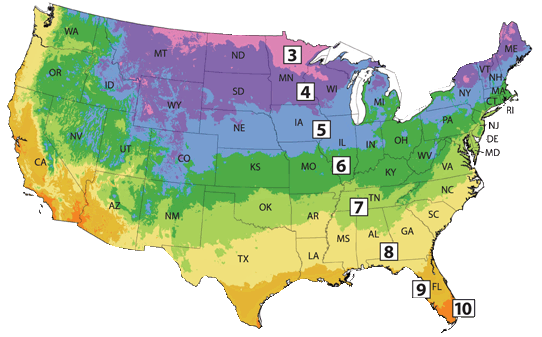
Hardiness Zone
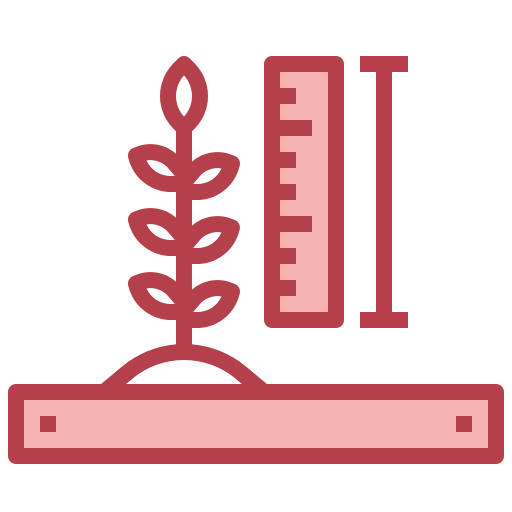
Mature Size
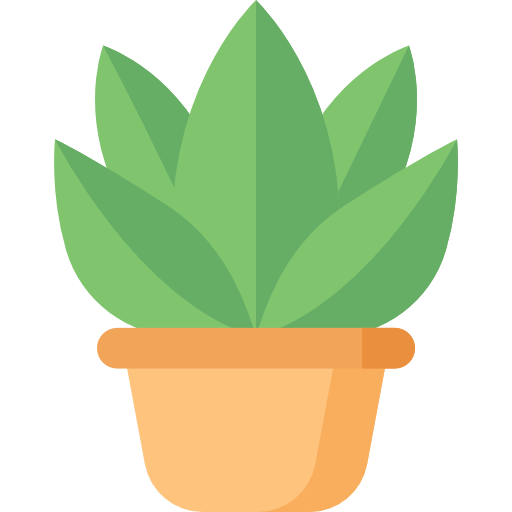
Plant Type

Sun Exposure

Toxicity

Watering Needs
Watering Aeoniums for Optimal Growth: When, How & Why
Like other drought-tolerant plants, water your Aeoniums approximately once every 7–10 days during their active growing season and reduce watering to once every 2-3 weeks in summer dormancy.
Aeonium succulents can survive with minimal water, making them ideal for xeriscapes and low-maintenance gardens. Unlike other succulents that store water primarily in their leaves, Aeoniums have shallow roots, meaning they benefit from occasional watering to prevent excessive drying.
- During winter and spring, in the active growing season, water deeply but infrequently, about once every 7–10 days, depending on climate and humidity. Ensure the soil is fully moistened, but avoid standing water. Indoor Aeoniums may need even less frequent watering.
- In summer, Aeoniums enter dormancy and need very little water, only once every 2–3 weeks, or when the soil is completely dry. Aeoniums naturally curl their leaves inward to minimize water loss. Provide only a light misting every few weeks if the leaves look excessively shriveled. Avoid heavy watering, as their roots absorb very little moisture during this period. Indoor Aeoniums may not go fully dormant, but will still require less water.
How Much Light Does Your Aeonium Plant Need
Aeoniums need at least 4–6 hours of bright, indirect light indoors and 6–8 hours of direct sunlight outdoors, with afternoon shade in hotter climates.
Aeonium plants thrive in full to partial sunlight. If they remain in low-light conditions for too long, they may stretch toward the light, leading to elongated stems and weaker growth. If this happens, gradually increase light exposure instead of moving them suddenly into intense sunlight, as this can cause leaf burns.
- When growing indoors, Aeoniums require bright, indirect light for at least 4-6 hours daily to maintain their shape and vibrant coloration. A south- or west-facing window is ideal. If natural light is insufficient, supplementing with a grow light can help prevent legginess. Avoid placing them in direct, harsh afternoon sun through glass, as it can cause leaf scorching. Ensure proper air circulation to prevent excessive humidity, which can lead to fungal issues.
- When growing outdoors, your Aeoniums thrive in full to partial sun, for at least 6–8 hours daily. However, in hotter climates (such as desert regions), they benefit from afternoon shade to prevent sunburn. The best placement is the morning sun with afternoon shade to balance light exposure while protecting them from intense heat. If grown in pots, Aeoniums can be moved seasonally to adjust for temperature and light changes.
You'll learn about Soil, Fertilizer, Hardiness Zones, and more about care below our Top 14 types of Aeoniums Succulents.
Here are Our Favorite Aeonium Varieties for Your Home and Garden Design
We’ve carefully selected 14 stunning Aeonium varieties that are perfect for adding bold color, sculptural form, and low-maintenance beauty to your home or garden design. Whether you’re creating a modern container display, enhancing a drought-tolerant landscape, or just love unique succulents, these favorites offer something for every style and space.

1
Black Rose - Aeonium arboreum zwartkop
BUY AT PLANET DESERTkeypoints:
- USDA Hardiness Zones: 9,10,11,12
- Watering Needs: Low, extremely drought tolerant
- Mature Size: 5 ft. tall, 3 ft. wide
- Flower Color: Yellow
The most popular Aeonium Black Rose is prized for its deep burgundy, almost black rosettes and yellow flowers that contrast beautifully against its slender, branching stems. This low-maintenance plant thrives in full sun, where its dark color intensifies, making it an eye-catching addition to any garden. The black rose succulent grows well in well-drained soil, whether in pots or rock gardens, and prefers infrequent but deep watering. During its active growth season (fall to spring), it benefits from occasional feeding with diluted succulent fertilizer. As a drought-tolerant variety, it requires little care beyond sunlight and occasional watering, making it an excellent choice for xeriscapes or decorative planters. Learn more...

2
Purple Rose 'Aeonium arboreum Atropurpureum'
BUY AT PLANET DESERTkeypoints:
- USDA Hardiness Zones: 9,10,11
- Watering Needs: Low, extremely drought tolerant
- Mature Size: 5 ft. tall
- Flower Color: Yellow
The Purple Rose Aeonium, with its rich, dark purple, almost wine-colored foliage, is a softer alternative to 'Zwartkop' that retains its dramatic beauty. Its large, open rosettes flourish in full to partial sun, with more sunlight deepening its purple hues. Like most Aeoniums, it enjoys mild temperatures and should be protected from frost. It prefers well-draining soil and a watering schedule of every 10–14 days, depending on the climate. Ideal for container gardens, Mediterranean landscapes, or mixed succulent arrangements, this easy-care succulent adds elegance with minimal upkeep. Learn more...

3
Aeonium Kiwi
BUY AT PLANET DESERTkeypoints:
- USDA Hardiness Zones: 9,10,11
- Watering Needs: Low, extremely drought tolerant
- Mature Size: 3 ft. tall
- Flower Color: Yellow
Aeonium ‘Kiwi’ is a vibrant, tri-colored succulent that showcases light green, yellow, and pink-tinged rosettes, resembling a watercolor painting. This compact-growing variety thrives in bright, indirect light or morning sun, making it a favorite for both indoor and outdoor gardens. Unlike darker Aeoniums, ‘Kiwi’ remains smaller and bushier, ideal for containers or decorative arrangements. It prefers light but regular watering and well-draining soil, ensuring it doesn’t sit in moisture. During its growing season (fall to spring), it can be fertilized lightly for healthy growth. Its colorful appearance, resilience, and easy care make it a must-have for succulent lovers. Learn more...

4
Copper Pinwheel ‘Aeonium sunburst’
BUY AT PLANET DESERTkeypoints:
- USDA Hardiness Zones: 10,11
- Watering Needs: Low, extremely drought tolerant
- Mature Size: 18 in. tall
- Flower Color: Yellow
Aeonium ‘Sunburst’ earns its name from its golden-yellow and green-striped foliage, with edges tinged in soft pink. This large, variegated variety forms rosettes up to 12 inches wide, making it a showstopper in any garden. It thrives in full to partial sun, with morning sunlight bringing out its brightest colors. As a low-maintenance succulent, it requires infrequent watering and fast-draining soil to prevent root rot. Perfect for containers, borders, or rock gardens, ‘Sunburst’ adds warmth and vibrancy to any setting with very little effort. Learn more...

5
Aeonium Pink Witch
BUY AT PLANET DESERTkeypoints:
- USDA Hardiness Zones: 10,11
- Watering Needs: Low, extremely drought tolerant
- Mature Size: 18 in. tall
- Flower Color: Yellow
Aeonium ‘Pink Witch’ is a rare beauty with soft pink and green variegation that intensifies in cooler temperatures. This low-maintenance succulent features delicate, pastel-toned rosettes that bring a unique charm to any setting. It grows best in bright, indirect sunlight to partial sun, where its colors are most vivid. Like other Aeoniums, it enjoys mild temperatures and a well-draining soil mix, making it perfect for pots, succulent gardens, or decorative planters. Watering is needed every two to three weeks, with reduced moisture during dormancy. Its compact size, stunning hues, and easy care make it a collector’s favorite. Learn more...

6
Canary Aeonium - Aeonium canariense
BUY AT PLANET DESERTkeypoints:
- USDA Hardiness Zones: 9,10,11
- Watering Needs: Low, extremely drought tolerant
- Mature Size: 24 in. tall, 24 in. wide
- Flower Color: Yellow
The Canary Aeonium forms large, fuzzy green rosettes that take on reddish edges in direct sunlight. Native to the Canary Islands, this low-growing variety spreads easily, creating a lush, tropical feel. It enjoys partial to full sun, thriving in coastal climates or Mediterranean gardens. Its drought tolerance and minimal watering needs make it ideal for rock gardens or xeriscapes. During dormancy, it requires very little water, and when actively growing, it benefits from occasional feeding. With its soft texture, sprawling habit, and adaptability, it’s a great choice for beginners. Learn more...

7
Mountain Rose Succulent ‘Aeonium dodrantale’
BUY AT PLANET DESERTkeypoints:
- USDA Hardiness Zones: 10,11
- Watering Needs: Low, extremely drought tolerant
- Mature Size: 3 in. tall, 4 in. wide
- Flower Color: Yellow
The Mountain Rose Succulent is a compact, rose-shaped variety with tight, symmetrical rosettes that resemble a blooming flower. Its blue-green leaves sometimes take on a pink hue in cool weather, enhancing its charm. This slow-growing Aeonium thrives in partial shade or indirect light, making it an ideal indoor plant. Watering should be done every 14–21 days, as its small root system is prone to rot if overwatered. Perfect for terrariums, small pots, or fairy gardens, ‘Mountain Rose’ is a delicate yet hardy succulent that captivates with minimal care. Learn more...

8
Aeonium medusa
BUY AT PLANET DESERTkeypoints:
- USDA Hardiness Zones: 9,10,11
- Watering Needs: Low, extremely drought tolerant
- Mature Size: 24 in. tall, 36 in. wide
- Flower Color: Yellow
Aeonium ‘Medusa’ boasts layered, twisting rosettes with green and reddish hues, resembling the mythical creature’s flowing hair. It’s a medium-sized variety that thrives in partial to full sun, with rich coloration in cooler months. Well-draining soil and watering every two weeks keep it healthy, while its tolerance for neglect makes it a great choice for busy plant owners. ‘Medusa’ grows well in containers, rock gardens, or Mediterranean landscapes, offering texture, movement, and a bold aesthetic. Learn more...

9
Aeonium Mint Saucer
BUY AT PLANET DESERTkeypoints:
- USDA Hardiness Zones: 9,10,11
- Watering Needs: Low, extremely drought tolerant
- Mature Size: 2 ft. tall, 12 in. wide
- Flower Color: Yellow
Aeonium ‘Mint Saucer’ features large, soft green rosettes that resemble a saucer, making it a visually appealing choice for succulent enthusiasts. This variety prefers full to partial sun, with its cool mint-green hue staying vibrant throughout the year. It thrives in well-draining soil, requiring water every two weeks during active growth. Perfect for modern gardens, patio containers, or indoor decor, ‘Mint Saucer’ is an easy-care plant that adds a fresh touch to any space. Learn more...

10
Lemon-Lime Starburst ‘Aeonium Starburst’
BUY AT PLANET DESERTkeypoints:
- USDA Hardiness Zones: 9,10,11
- Watering Needs: Low, extremely drought tolerant
- Mature Size: 2 ft. tall, 2 ft. wide
- Flower Color: Yellow
Aeonium ‘Starburst’ is a rare, variegated cultivar with bright green and creamy yellow leaves, edged in pink, giving it a citrus-inspired look. This medium-sized variety does best in the morning sun and afternoon shade, as too much intense sunlight can cause fading. Its low-maintenance nature means it only needs watering every 14–21 days, with extra caution during summer dormancy. Ideal for containers or accent plantings, ‘Starburst’ brings year-round vibrancy to any space. Learn more...

11
Aeonium Chanel
BUY AT PLANET DESERTkeypoints:
- USDA Hardiness Zones: 10,11
- Watering Needs: Low, extremely drought tolerant
- Mature Size: 12 in. tall, 2 ft. wide
- Flower Color: Pale Yellow, White
Aeonium ‘Channel’ is a striking hybrid featuring large, spoon-shaped leaves that shift between deep green and bronze-purple, creating a dramatic display. This fast-growing variety forms dense, rounded mounds, making it ideal for landscape borders, pots, or succulent arrangements. Like other aeoniums, it prefers full sun to partial shade and thrives in well-draining soil. Water sparingly, allowing the soil to dry between waterings, especially in its dormant summer phase. Highly sought after for its bold colors and sculptural form, Aeonium ‘Channel’ is a standout choice for both novice and experienced succulent enthusiasts. Learn more...

12
Aeonium gomerense
BUY AT PLANET DESERTkeypoints:
- USDA Hardiness Zones: 9,10,11
- Watering Needs: Low, extremely drought tolerant
- Mature Size: Up to 2 ft. tall
- Flower Color: Pale Yellow
Aeonium gomerense is a compact, branching succulent known for its lush rosettes of green leaves that develop a reddish hue under stress or full sun. Native to the Canary Islands, it thrives in mild, Mediterranean-like climates and prefers full sun to partial shade. This aeonium is particularly drought-tolerant but benefits from occasional watering during dry periods. It grows well in fast-draining soil and is best suited for rock gardens, container planting, or xeriscapes. Popular among collectors for its vibrant foliage and adaptability, it adds year-round interest with minimal care. Learn more...

13
Giant Red Aeonium 'Cyclops'
BUY AT PLANET DESERTkeypoints:
- USDA Hardiness Zones: 10,11
- Watering Needs: Low, extremely drought tolerant
- Mature Size: 5 ft. tall, 4 ft. wide
- Flower Color: Yellow
Aeonium ‘Cyclops’ is a massive, tree-like succulent featuring deep red rosettes with green centers, reaching up to 4 feet tall in the right conditions. This fast-growing variety thrives in full sun, where its red tones become more intense. It prefers well-draining soil and watering every 10–14 days during the growing season, with minimal water during dormancy. ‘Cyclops’ makes a bold statement in desert landscapes, succulent gardens, or large containers, providing height and drama with its towering presence. Despite its size, it remains remarkably low-maintenance. Learn more...

14
Aeonium 'Mardi Gras'
BUY AT PLANET DESERTkeypoints:
- USDA Hardiness Zones: 9,10,11
- Watering Needs: Low, extremely drought tolerant
- Mature Size: 4 in. tall, 6 in. wide
- Flower Color: White, Yellow
Aeonium ‘Mardi Gras’ is a colorful, variegated succulent featuring stripes of green, pink, and yellow, creating a festive display. Its compact, bushy growth makes it perfect for containers or small garden spaces. It flourishes in bright, indirect sunlight to partial sun, with its colors intensifying in cool weather. Like other Aeoniums, it prefers well-draining soil and deep but infrequent watering. Its vivid hues, resilience, and year-round interest make it a standout in any succulent collection. Learn more...
Landscaping with Aeoniums: Drought-Tolerant Succulents for Bold Garden Design
Aeoniums are versatile succulents that add striking visual interest to both gardens and container arrangements. Their unique rosette-shaped foliage, vibrant colors, and branching growth make them excellent focal points in various settings.
Aeonium Succulent Design Ideas: Best Uses in Gardens, Rock Beds, and Pots
Aeoniums are versatile and stylish succulents that can elevate any garden space. Below are some of the best ways to use them in rock beds, decorative pots, and landscape designs.

The Aeoniums Look Great Rock in Gardens & Xeriscapes
Aeoniums thrive in well-draining, rocky soil and complement drought-tolerant landscapes beautifully. They work well alongside boulders, gravel pathways, and dry river beds, adding structure and contrast.

Aeonium Looks Nice on Borders & as an Accent Plant
Their architectural form makes them perfect for borders, raised beds, or as accents in Mediterranean-style gardens. Taller varieties like Aeonium arboreum create a dramatic effect, while smaller types fill in gaps.

Aeoniums are Great for Creating a Stunning Container Garden and Add Beauty to Any Space
Aeoniums are ideal for pots and planters, making them great for patios, balconies, and small spaces. Their shallow root systems allow them to thrive in decorative containers with well-draining soil.
Finding the Right Companion Plants for Your Aeoniums
Pairing aeoniums with the right companions can enhance their beauty and support healthy growth. Below are some great plants that thrive alongside aeoniums in similar conditions.

Pair Aeoniums with Similar Water-Wise Succulents for a Spectacular, Low-Maintenance Look
Aeoniums pair well with succulents like Echeveria, Graptopetalum, and Crassula, creating a stunning contrast in shape and color. Their winter-growing habit balances well with summer-dormant succulents.


Use Ornamental Grasses to Soften Aeoniums’ Bold Shapes and Add Movement to the Landscape
Pairing Aeoniums with Blue Fescue or Pennisetum softens the landscape and adds movement to the composition. The fine foliage of grasses highlights Aeonium’s symmetry and balances its strong architectural presence.

Accent Aeoniums with Rocks & Driftwood for a Desert-Inspired, Artistic Display
Using natural elements like lava rocks, driftwood, or weathered stones enhances the sculptural beauty of Aeoniums, giving a more natural, desert-inspired look. This combination also creates a striking contrast between organic textures and bold rosette forms.
Perfect Soil & Fertilizer Essentials for Thriving Aeonium Plants
Aeoniums need well-drained succulent soil and prefer minimal NPK fertilizer once a year in spring. If growing in pots, ensure the container has drainage holes to prevent excess water buildup. Avoid heavy, clay-rich soils that retain too much moisture, as they can suffocate the roots.
- Aeoniums require fast-draining soil to prevent root rot, as they do not tolerate prolonged moisture. Instead, make or buy a well-draining potting mix, or ideally use our specialized succulent potting mix that contains 5 natural substrates and mycorrhizae to promote the development of a strong root system that helps your Aeonium succulent to thrive.
- A liquid NPK fertilizer with a ratio of about 5-10-5 can be applied once a year in spring to promote healthy foliage and root development. Avoid over-fertilizing, as excessive nutrients can lead to weak, leggy growth. During dormancy, Aeoniums do not require fertilization, as their growth slows down significantly.
For outdoor Aeoniums, mulching with gravel or small pebbles helps retain slight moisture without causing rot while also preventing weed growth. However, avoid organic mulches like wood chips, which can trap moisture and encourage fungal issues.
Optimal Indoor Temperature & Humidity Requirements
Indoors, Aeoniums thrive in temperatures between 55–75°F, while outdoors, they grow best in USDA zones 9–11.
- When grown indoors as a houseplant, Aeoniums prefer temperatures between 55–75°F with moderate humidity (40–50%). While they can tolerate brief temperature fluctuations, it’s important to keep them away from cold drafts, heating vents, and excessively dry air. Aeoniums adapt well to most indoor environments but should be placed near a bright window with indirect light for optimal growth.
Outdoor Hardiness Zones & More

Overwintering Aeoniums
Aeoniums prefer a Mediterranean climate but can be overwintered successfully in containers by bringing them indoors before frost, as they are hardy down to 25–30°F. During the winter, reduce watering to just enough to keep the foliage from shriveling. Keep the plants in a cool environment, around 50°F, and restrict water to prevent root rot. When spring arrives and the weather warms up, you can gradually reintroduce your Aeoniums to outdoor conditions, ensuring they are well-acclimated to the change in temperature and light.
How to Propagate Aeonium of Plants – A Step-by-Step Guide
The propagation of Aeoniums is a straightforward process that can be done using stem cuttings, which often fall off the plant naturally. The best time to propagate Aeoniums is during their growing season in the spring. Below is a step-by-step guide to successfully propagating Aeoniums.
- Choose the Right Time: The best time to propagate Aeoniums is during their active growing season from fall to spring. Avoid propagating during summer dormancy, as the cuttings may struggle to root.
- Select a Healthy Cutting: Using clean, sharp scissors or pruning shears, cut a healthy stem or rosette with at least 3–5 inches of length. If the Aeonium has offshoots (pups), gently separate them from the main plant. Avoid using dried or unhealthy stems, as they may fail to root.
- Let the Cutting Callous: Place the cutting in a dry, shaded area for 2–5 days to allow the cut end to form a protective callous. This step is essential to prevent rot when planting.

- Prepare the Soil: Use a well-draining succulent or cactus mix to prevent excess moisture retention. You can enhance drainage by mixing in perlite, sand, or pumice. If planting in a pot, make sure it has drainage holes.
- Plant the Cutting: Insert the calloused end about an inch into the soil, ensuring the cutting is stable. For leaf cuttings, lay them flat on the soil and lightly press them down. Avoid deep planting, as this can cause rot.
- Watering After Planting: Wait 3–5 days before watering to avoid fungal infections. After this period, mist the soil lightly or water sparingly, just enough to keep the soil slightly moist.
- Provide Proper Light & Care: Keep the cuttings in a bright, indirect light location while they root. Avoid direct sun exposure initially, as it may cause dehydration. Once new roots form (in 2–4 weeks), gradually increase light exposure.
- Transplanting the Rooted Cutting: When you see new growth, the Aeonium is ready for its permanent location. Transfer it to a bigger pot or garden space with similar well-draining soil. Begin regular Aeonium care with deep but infrequent watering.
Aeoniums can also be propagated from seed, division (for those types that produce offsets or side rosettes), and leaf cuttings. This versatility in propagation methods makes it easy to expand your collection or share these beautiful plants with friends. With minimal effort, Aeonium propagation ensures a thriving collection of these stunning, low-maintenance succulents!
Potting & Repotting Aeonium Plants
When potting an Aeonium, choose a well-draining container with ample drainage holes at the bottom to prevent water retention and root rot. Opting for terra-cotta or clay pots can further help regulate soil moisture, as these materials allow excess water to evaporate more efficiently.
The best time to pot or repot an Aeonium is during its active growing season in spring, ensuring minimal stress on the plant. Refresh the soil annually by either replacing the top layer or repotting if the plant has outgrown its current container. Signs that an Aeonium needs repotting include slowed growth, soil drying out too quickly, or roots emerging from the drainage holes. Most Aeoniums benefit from repotting every 2–3 years to maintain healthy root development and optimal growth.
Pests & Common Problems with Aeonium Succulents
Aeoniums are generally resistant to pests and diseases, making them a low-maintenance choice for succulent lovers. Their thick, waxy leaves deter most common pests, and they rarely face serious infestations. However, under certain conditions, a few issues may arise.

- Aphids: These tiny insects suck sap from new growth, causing leaves to curl or distort. Rinse them off with water or treat them with insecticidal soap.
- Mealybugs White, cotton-like pests that hide in leaf crevices and suck plant juices. Remove them with a cotton swab dipped in alcohol.
- Spider Mites: These microscopic pests cause fine webbing and yellow spots on leaves, especially in hot, dry conditions. Increase humidity and use neem oil to control them.
- Snails & Slugs: More common in outdoor Aeoniums, these pests chew on leaves, leaving holes. Use physical barriers or organic slug repellents.
- Overwatering & Root Rot: Aeoniums are prone to root rot if soil remains soggy. Ensure proper drainage and allow the soil to dry between waterings.
- Leggy Growth: Insufficient light can cause stretching and weak stems. Provide at least 4–6 hours of bright light daily to maintain compact growth.
- Leaf Drop: Aeoniums naturally shed leaves during summer dormancy, but excessive leaf drop can be a sign of stress from overwatering or sudden environmental changes.
- Sun Burn: Too much direct sunlight, especially in hot climates, can cause brown or scorched patches on the leaves. Provide afternoon shade if needed.
- Dying Mother Branch: After flowering, Aeonium rosettes may die back, as they are monocarpic. If this happens, trim away the spent rosette, and new offsets will continue to grow.
- Browning leaves: Older leaves naturally turn brown and fall off over time, but excessive browning can indicate too much direct sun, dehydration, or poor air circulation. Adjust light exposure and watering as needed.
By maintaining proper watering, lighting, and airflow, Aeoniums remain healthy and resistant to most common issues.
Where to Buy Aeonium Succulent Plants?
When it comes to buying Aeonium (tree houseleek), unless you have a local nursery that specializes in succulents, you may have a hard time finding Aeonium plants near you.
Most of the types of Aeonium listed above are available at Planet Desert. You can just click the buy link on any of the plants on our list above, or feel free to explore more types of Aeonium plants here.
We have the world's largest selection of Cactus & Succulents that can be shipped anywhere in the United States and are guaranteed to arrive happy & healthy.
Key Takeaways
- Aeonium succulents feature rosettes of bold, geometric foliage that add sculptural interest to garden beds, containers, and rock landscapes.
- They are drought-tolerant plants that thrive in dry, Mediterranean-style gardens once established, making them perfect for low-water landscapes.
- Aeoniums come in a variety of striking colors, from lime green to deep burgundy, offering year-round visual contrast and seasonal flair.
- These succulents grow especially well in containers, raised beds, and along borders, making them ideal for both modern and cottage-style garden designs.
- Unlike many succulents, some Aeoniums grow actively in cooler months, adding vibrant color and texture to gardens during fall and winter.
The Bottom Line
Overall, the Aeoniums are stunning, low-maintenance succulents that bring bold colors and striking rosette formations to any garden or indoor space. With varieties ranging from the deep burgundy ‘Black Rose’ to the vibrant ‘Kiwi’ and ‘Sunburst’, these plants offer year-round beauty with minimal effort. They thrive in well-draining soil, bright light, and mild temperatures, making them ideal for both indoor and outdoor settings in USDA zones 9–11. Aeoniums require infrequent watering, as they store moisture in their fleshy leaves, and they benefit from occasional pruning to maintain their compact, bushy growth. Whether placed on a sunny windowsill, patio container, or drought-tolerant landscape, Aeoniums add a striking architectural appeal with their unique growth habits. With proper care, ensuring the right light, well-draining soil, and avoiding overwatering, these succulents will thrive for years, rewarding growers with their resilience and stunning visual impact.
Aeonium Plant Growers Quick Reference Guide
| Bloom Season | Winter, Spring |
|---|---|
| Botanical Name | Aeonium spp. |
| Common Name | Tree houseleek |
| Dormancy | Summer |
| Family | Crassulaceae |
| Flower Color | Creamy white, yellowish, golden, pink, red |
| Genus | Aeonium |
| Growth Habit | Rosettes |
| Growth Rate | Slow |
| Hardiness Zone | 9, 10, 11 |
| Mature Size | 36 in. tall, 12 in. wide |
| Native Area | Canary Islands, Africa |
| Plant Type | Houseplant Perennial succulent |
| Propagation | Stem cuttings, leaf cuttings, offsets |
| Resistance | Pest-resistant, drought-tolerant, heat-tolerant |
| Soil PH | 6.5, Acidic, Neutral |
| Soil Type | Well-drained succulent potting mix soil |
| Special Features | Showy foliage, easy to grow |
| Sun Exposure | Full sun, Partial shade |
| Toxicity | Friendly to humans, friendly to cats, and friendly to dogs |
| Watering Needs | Low |
Frequently Asked Questions
-
How do you care for Aeonium?
- Soil: Use a well-draining succulent or cactus mix. You can improve drainage by adding perlite, sand, or pumice. Avoid heavy, moisture-retentive soils.
- Light: Aeoniums thrive in full to partial sunlight. Indoors, place them near a bright, south- or west-facing window or supplement with a grow light if needed.
- Watering: Water every 14–21 days, allowing the soil to dry out between waterings. Reduce watering in the summer when Aeoniums enter dormancy. Overwatering can cause root rot.
- Indoor Temperature: Prefers temperatures between 55–75°F. Keep away from cold drafts, heating vents, and excessive dryness.
- Outdoor USDA Zones: Best suited for zones 9–11. In colder climates, grow in containers and bring indoors when temperatures drop below 25°F.
- Pruning: Trim leggy growth, remove dead leaves, and cut back spent rosettes to encourage new branching. Prune in fall or spring during active growth.
-
Is Aeonium an indoor plant?
Yes, Aeoniums can be grown as indoor plants, but they need bright, indirect light to thrive. A south- or west-facing window is ideal, and using a grow light can help prevent stretching in low-light conditions. Indoors, they prefer temperatures between 55–75°F and moderate humidity. While Aeoniums adapt well to indoor environments, they do best when moved outdoors in warmer months to receive natural sunlight. If kept inside, ensure they have proper air circulation and avoid overwatering, as stagnant indoor conditions can lead to root rot.
-
Why are the leaves falling off my Aeonium?
Leaf drop in Aeoniums is often a natural process, especially during summer dormancy when they shed older leaves to conserve moisture. However, excessive leaf loss can indicate overwatering, underwatering, or sudden environmental changes. Overwatering causes root rot, leading to mushy, yellowing leaves that fall off easily. On the other hand, underwatering results in shriveled, dry leaves dropping prematurely. If you've recently moved or repotted your Aeonium, it may experience temporary shock when adjusting to new conditions. Keep watering balanced and provide consistent light and temperature to prevent excessive leaf loss.
-
How do I know if my Aeonium needs water?
The best way to tell if your Aeonium needs water is to check the soil. If the top 1–2 inches are completely dry, it’s time to water. Aeoniums store some moisture in their stems and leaves, so they don’t need frequent watering. Signs of dehydration include wrinkled leaves, drooping rosettes, or curling foliage. However, during summer dormancy, they naturally appear dry and may lose some leaves, so avoid overwatering during this period. Always use the "soak and dry" method, ensuring excess water drains out completely to prevent rot.
-
How do I stop Aeoniums from getting leggy?
Aeoniums become leggy when they don’t receive enough light, stretching towards the nearest light source. To fix this, move them to a brighter location with at least 4–6 hours of sunlight. If growing indoors, place them near a south- or west-facing window or use a grow light. Regular pruning helps control legginess—trim long, stretched stems in spring or fall to encourage new branching. Additionally, rotating the pot every few weeks ensures even light exposure, preventing the plant from leaning in one direction. If legginess has already set in, propagating cuttings from the trimmed sections can rejuvenate the plant.




